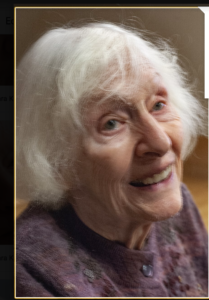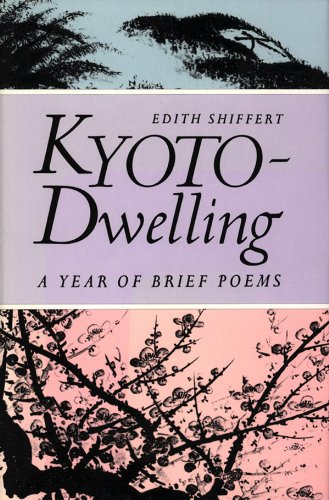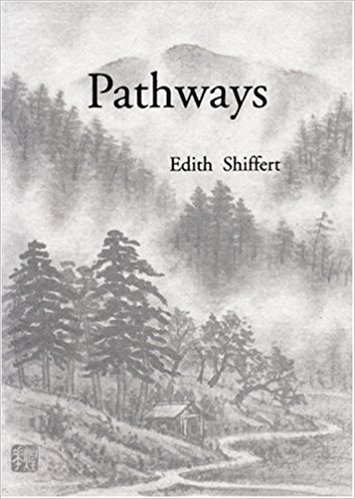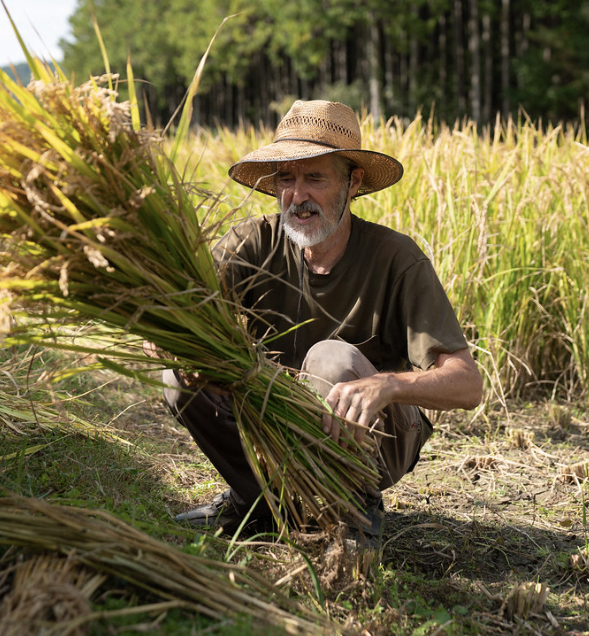

(John Dougill writes…) News comes of the passing away of Edith Shiffert (1916-2017), long time resident poet and a revered figure for those of us who belong to Writers in Kyoto. Other English-language authors lived in Kyoto before her, but for the postwar generation and those who followed in their footsteps, Edith was a groundbreaking figure who represented the very best of Kyoto’s literary connections. This was not only because of the widespread reputation she had, both here and in the US, but for her close identification with Kyoto’s historical and spiritual heritage. Along with such poets as Cid Corman, Gary Snyder and Hal Stewart, she established Kyoto as a rich source of inspirational writing exemplified by the Kyoto Journal in which she often featured.
Personally I first came across Edith in connection with her book on Buson, written in collaboration with a graduate student of mine, Yuki Sawa. The book was influential in raising Buson’s esteem in the outside world. Thereafter I was fortunate to encounter Edith on several occasions, notably through her guest attendances at the interfaith discussion group run by Morris Augustine. I was also able to visit her both at the Residents Home in Ohara and her final Residents Home here in Kyoto.
Perhaps the book that best sums up her attachment to the city is the Tuttle publication, Kyoto-Dwelling: A Year of Brief Poems (1987). Extracted pages are available online through Google Books and can be read at this link here. It’s worth savoring her poetry while dedicating a few quiet moments in her memory. There is an autobiographical introduction, and as the subtitle indicates it contains a yearly cycle in 12 different sections, with a seasonal illustration for each month.
Edith first came to Kyoto in the heady days of 1963, and she writes fondly of the various dwellings which gave rise to poetry closely related to the spirit of place: a room on Yoshida Hill overlooking the city; a rented room in a Zen subtemple at Myoshin-ji; a lodging in the north between Takaragaike and Midorigaike lakes, before relocation close to Kamigamo Shrine and later Shimogamo Shrine. From 1981 she lived at the foot of Mt Hiei in the north east, not far from Buson’s grave at Kompoku-ji. Here she enjoyed a happy second marriage with Minoru Sawano, which formed the basis for a book in Japanese.
Edith studied Taoism and Buddhism in the 1930s, part of a pioneering generation who turned their attention to the Far East. Her love for Kyoto is evident throughout her writings, and she saw it as ‘a Taoist realm, a place of imagined satori… The sound of rain. The sound of wind. The silence of falling snow. Ridges disappearing into mist. A sudden bursting out of masses of blossoms. Birds in the early morning. Eroding rocks that blow away as sand. Flowing water.’
This love for the earth
is all I need to survive.
My pack sack holds much.
Writers in Kyoto would like to salute the passing of one of our great predecessors. RIP Edith Shiffert.

*********************
For a detailed biography and listing of her works, see this University of California site.
For an article and tribute by Jane Wieman, please see here.
For a Japan Times review of In the Ninth Decade by Edith, please see here.
For a listing of her books in print, see here.







Recent Comments